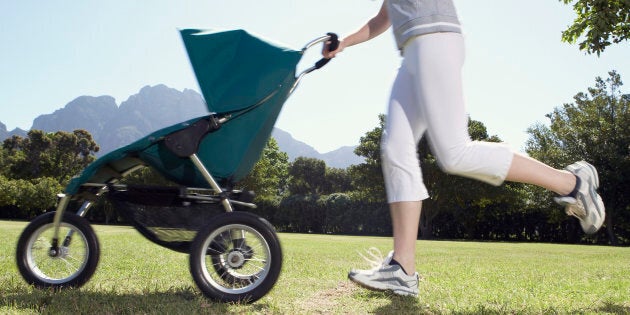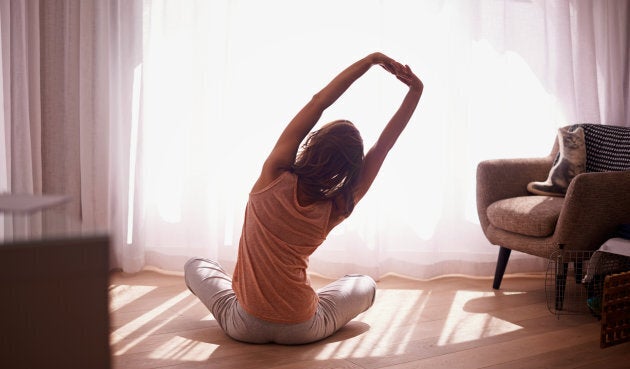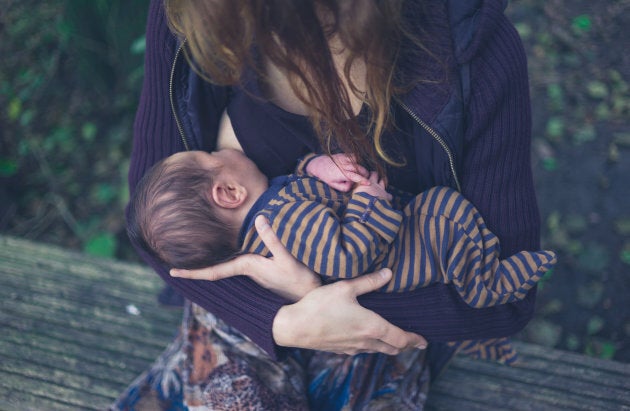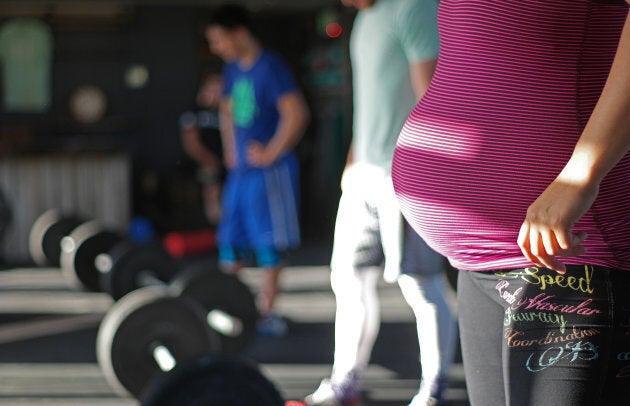
You've recently had a bub. Congrats! It's likely you're wading through the midst of three-hourly feeds, cracked nipples and endless cycles of washing right now. The last thing you probably want to do is think about exercise and if that's the case, no problem.
But, with so much pressure on new mothers to 'bounce back', often women put unnecessary pressure on themselves to lose the baby weight and get back into shape right after the baby is born, at what is already a difficult time.
Not only that, doing the wrong thing can cause damage or harm.
"Postpartum training, just like any other training, is a very individual process," personal trainer and sports management expert Alexa Towersey told HuffPost Australia.
"At the most basic level what you are able to do can be dependent on the type of birth -- C-section versus natural -- and whether there were any health complications during the pregnancy or during the birthing process itself."
The first six weeks
"As a general rule of thumb (and under your doctor's guidance), the emphasis in the first six weeks is on light stretching, easy, low impact cardio and strengthening the pelvic floor and abdominal muscles. Skipping, running and kickboxing classes are out -- walking and kegels are in. Use this time to connect with your baby -- you can walk with the pram and do kegels while breastfeeding," Towersey said.

Renee Scott, Founder and Director of Balance Moves, agrees.
"I generally suggest walking outside in the fresh air and breathing techniques for meditation and gentle core activation. These things will allow the mother to ideally have a positive mindset and will give a small amount of routine to the day.
"Their body is adjusting to very little sleep and the demands of a newborn, so try and enjoy the quiet, peaceful moments and the beauty of producing life. I only suggest further exercise after six to eight weeks with clearance from the doctor," Scott said.
Towersey suggests that the first few months is also a good time to slowly work on strengthening your pelvic floor again.
"I recommend starting pelvic floor exercises as soon as possible. The easiest way to think about switching it on is to imagine you're stopping yourself from peeing mudflow -- draw everything in and up."
"Try using your baby's age for guidance. One-week-old equals 10 sets of one-second holds. Two-weeks-old equals 10 sets of two-second holds and so on until you reach 10 weeks -- you get the picture," Towersey said.

It's tempting to want to do crunches right away seeing as the tummy area has changed so much during pregnancy. The problem here is that your abdomen have been through a lot, so you need to go slow.
"For the abdominals, a lot depends on the nature of the birth itself, and also as to whether rectus diastasis occurred and to what level. Rectus diastasis is essentially the splitting of the stomach muscles to accommodate the growth of the baby. The emphasis should be on "knitting" the midsection together. Crunches and sit-ups are out, heel slides and shoulder raises are in. I'm a big advocate of both pre and postnatal pilates," Towersey said.
The first six months
You've made it through the first six weeks and you're perhaps feeling slighting more human. Then again, maybe not. That's why you need to listen to your body.
"I believe that you get in exercise where you can. A walk for 20 minutes once a day can do amazing things for the body and mind," Scott said.
Where you can, try to get to postnatal pilates, barre attack or swimming session where you can focus on yourself and not worry about your newborn for that small amount of the day. Ideally two to three times a week will get you back in shape after six to eight months, but be patient -- it can take up to 12 or 18 months to feel normal and energised again. Be kind on yourself with whatever exercise you choose and be proud of even making it to one or two classes a week, just moving your body again will help."
Towersey says the key to bouncing back is being realistic about how fit you were before you had your baby.
"You need to take into account your fitness level, training experience and lifestyle both before and during pregnancy. If fitness has always been a part of your life and you have built and maintained a strong foundation throughout, then both the timing of and the type of exercises you can go back to will vary greatly from those who have led more sedentary lifestyles."

"I have had clients who have lifted weights all the way through their pregnancy, and are given the all clear to start back in training four to six weeks later (albeit with specific modifications), and I've also had clients who have used pregnancy to become motivated to start training, and that is a very different process," Towersey said.
As for what you should focus on, a combination of strength training and low impact cardio is the best combination.
"Posture and core strength is usually compromised during pregnancy, so I suggest focusing a lot on lengthening the front of the body and strengthening the back of the body. A combination of weight training, pilates, and low impact aerobic based exercise would be my suggestion," Towersey said.
"Power walking is amazing for fat loss which can be a primary concern for women. In terms of exercise selection, the only other thing you need to take note of here is whether any pubic symphysis is present which can mean single leg exercises are minimised initially."
Getting back into some form of physical exercise isn't just good for your body, it's very important for mental health.
"I believe that incorporating fitness and feeling physically strong post partum is incredibly important for women, not just for the aesthetic benefits, but also when it comes to the mental health side and helping to prevent and/or treat postpartum depression," Towersey said.
Scott also emphasises that above all, you need to be gentle with yourself. The pressures of social media can get to you when you're housebound and vulnerable so put the phone down and focus on being happy and healthy.
"If you mentally can't get your head around working your post-baby body then prioritise healthy food and being active in some way, but it is also important to remember that it took 10 months to produce a baby it will take at least 10 months to get your body back. You have a beautiful healthy child that you, and only you could create.
"You are amazing and your body doesn't need to reflect perfection for you to know and believe that. Learn to love your body with all its flaws at this time because producing a baby is a gift," Scott said.

Infographic from Fix